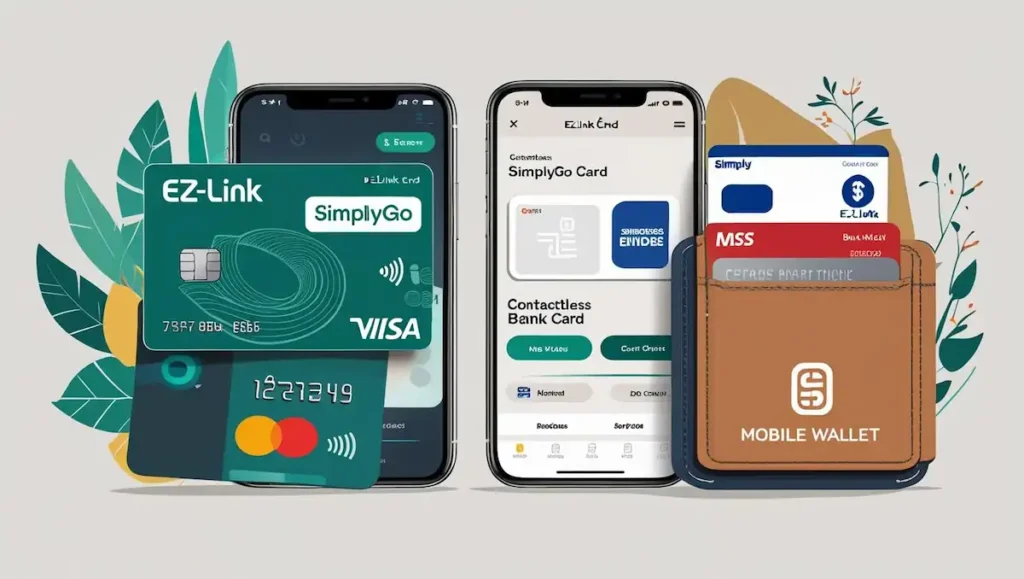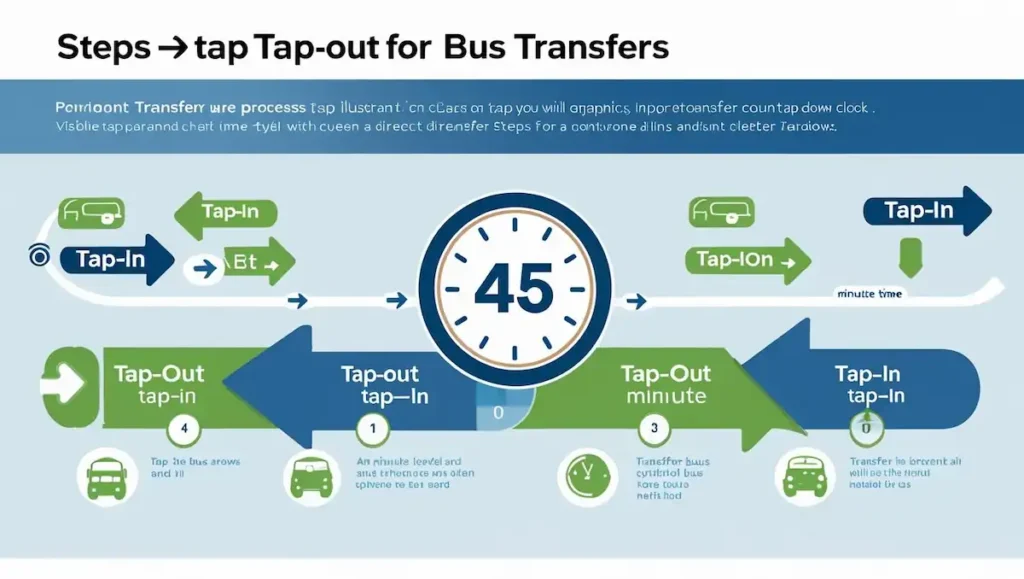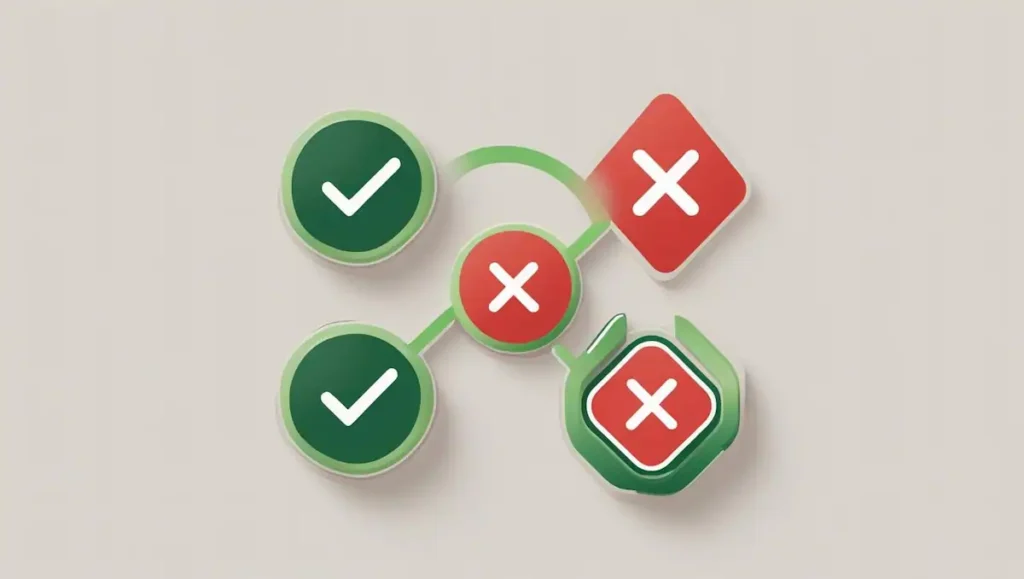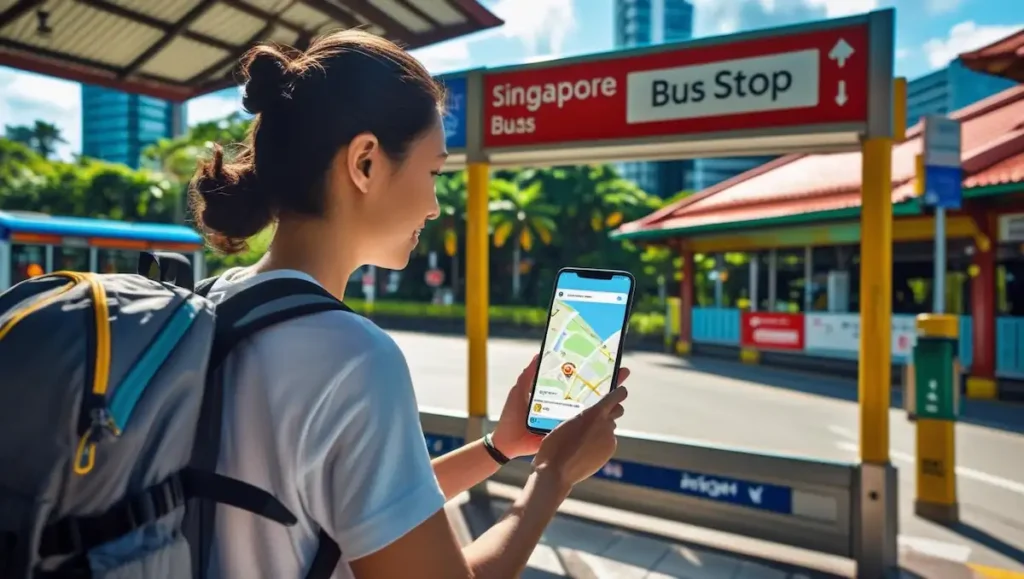Introduction
Let’s admit it: Singapore’s buses are widely available and initially appear to be user-friendly. They are well-connected, tidy, and on time. However, things become a little unclear as you begin to figure out how to board one.
Is an EZ-Link card required, or can you use your bank card to tap in? Why is there so much discussion about “distance-based fares”? Why do people keep saying that you will be overcharged if you don’t tap out? And hold on, what distinguishes a contactless Visa from a SimplyGo card?
You’re not alone if your mind is already racing.
The first time they attempt to take a bus in Singapore, many people be it tourists, exchange students, newcomers, and even returning locals who have been away for some time, feel uneasy. It’s not because of problems with the system. It’s actually among the most effective in the world. Simply put, it isn’t explained in detail up front.
The flat fare system is used in the majority of cities worldwide; you board, pay a set amount, and then depart. Singapore doesn’t. Rather, it employs a fare model based on distance. In actuality, this is intended to be more equitable, economical, and effective. but only after you comprehend how it functions.
The bus system is a major component of Singapore’s first-rate public transportation system. However, due to a lack of knowledge about the fare system, people frequently underuse or completely avoid buses.
This guide can help with that.
Everything you need to know has been condensed into a single, straightforward article, free of superfluous jargon and complexity. Whether you’re here for three days or three years, you’ll discover:
- The precise operation of Singapore’s distance-based fare system
- Why it matters and what happens when you tap in and out
- The benefits and drawbacks of every payment option, including EZ-Link and contactless cards
- How to check and schedule your ticket in advance
- How to make the most of transfers to save money
- And what to do in the event that you get charged incorrectly or miss a tap
The Operation of Singapore’s Distance-Based Bus Fare System
The distance-based fare model is the best example of Singapore’s public transportation system, which is based on efficiency, accuracy, and fairness.
Singapore’s system is set up so that you only pay for the actual distance you travel, regardless of how many buses (or MRTs) you take, in contrast to cities where you pay a flat fee regardless of how far you travel or how many services you switch. As long as you follow the guidelines, this strategy incentivizes short trips and lowers the cost of longer, multi-leg trips.
However, what does “distance-based” actually mean, and how does it operate in reality?
Let’s look into it.
The distance-based fare model, which powers Singapore’s public bus fare system, may sound a bit technical, but when you break it down, the idea makes sense. Regardless of how many services or transfers you use during your trip, you are charged according to the total distance you travel rather than a set fee each time you board a bus. To put it another way, the important thing is how far you go, not how many buses you take. This system is advantageous to you, particularly if you’re combining buses and MRTs with other forms of transportation.
Longer rides remain reasonably priced because the rate of increase slows down as you travel farther. But it all comes down to one crucial habit: tapping in when you get on board and out when you get off. For the system to determine the correct fare, it needs to know where your trip starts and ends. If you forget to tap out, the system will charge the maximum fare. This eliminates any transfer discount you might otherwise be eligible for, in addition to increasing your costs.
Fare Tiers: How Much Will You Pay?
Here’s a simplified look at how fares increase as distance increases. These are approximate adult fares using EZ-Link or SimplyGo:
| Distance (km) | Estimated Fare (SGD) |
| 0 – 3.2 | $0.92 – $1.50 |
| 3.3 – 8.2 | $1.50 – $1.90 |
| 8.3 – 15.2 | $1.90 – $2.20 |
| 15.3 – 25.2 | $2.20 – $2.50 |
| > 25.2 | $2.50 – $2.80 (cap) |
Note: These numbers are approximate and can change. For the most up-to-date fares, use official sources like TransitLink or the SimplyGo app.
How Distance is Measured
Distance is the key factor that determines your fare in Singapore’s public bus system. It’s not just any distance, though; it’s the exact path you take, measured from the time you tap in until you tap out. This is a calculated, point-to-point measurement based on your actual boarding and alighting locations, not a rough estimate based on zones or regions like in some other countries.
Your fare is based on the total distance you travel during your entire trip, even if it involves taking several buses or a combination of buses and trains. Every bus stop and MRT station is digitally mapped into the system.
Since the distance logged is solely dependent on your recorded entry and exit points, tapping accuracy is also very important. The system charges a default maximum if you don’t tap out because it is unable to determine the actual distance you traveled.
However, if you follow the steps correctly, you will receive a fare that accurately represents your journey, not a guess or an estimate, but a measured distance specific to your journey through the city. This careful process guarantees that commuters are only paying for the distance they have traveled and nothing more, allowing for uniformity and equity across the board.
The Significance of It
In addition to simply determining the cost of each trip, Singapore’s distance-based bus fare system is significant because it reflects the nation’s dedication to equity, accuracy, and sustainable long-term transportation.
The system encourages people to move around the city more deliberately by charging passengers according to the actual distance traveled rather than flat rates or arbitrary zones. It guarantees that someone who is just crossing town won’t be charged the same as someone who is traveling from one end of the island to the other.
Future infrastructure design, traffic control, and route optimization are all influenced by data from millions of daily trips. In actuality, the fare structure influences the city’s transportation development in real time. More broadly, this model promotes both economic and environmental objectives.
Making public transportation more affordable, especially for short- to medium-distance travel, makes it a desirable and feasible substitute for driving a private vehicle. As a result, there is less traffic on the roads, fewer emissions, and more sustainable urban living.
Payment Options: EZ-Link, SimplyGo, and Others:

In addition to being quick and effective, Singapore’s bus system is designed to be convenient and cashless. Although some buses still accept cash payments, most commuters (and visitors) choose to use one of the many digital payment methods available. Selecting the appropriate one at the card reader can help you avoid needless stress, save money, and save time.
Let’s examine each of the four primary payment methods and how they operate.
SimplyGo (using devices or contactless bank cards)
What It Is:
With SimplyGo, you can pay straight from your smartphone using Apple Pay, Google Pay, or Samsung Pay, or you can use a Visa, Mastercard, or NETS-enabled contactless bank card.
How It Operates:
- When getting on and off the bus, tap your phone or card on the reader.
- Your associated bank account is automatically debited for your fare.
- Top-ups are not required.
Advantages:
- Not having to wait in line at top-up machines makes it incredibly convenient.
- Works with compatible cards for both residents and visitors.
- The SimplyGo app allows you to keep track of your travels and fare deductions.
Cons:
- There may be transaction or currency conversion fees associated with certain foreign cards. Before using, check with your bank.
- Certain cards, particularly those that are older or non-contactless, are not accepted.
SimplyGo Card (Dedicated Transport Card)
What It Is:
A physical card with stored value that is made to integrate with the SimplyGo system and provide the same tap-and-go convenience.
How It Operates:
- Get the card at convenience stores or MRT stations.
- Use machines, kiosks, or the SimplyGo app to top it up.
- Like any other transport card, tap in and out.
Advantages:
- Connected to the SimplyGo app to track transactions in real time.
- Excellent for people who would rather not travel with their bank card.
- Works flawlessly on buses and MRT.
Cons:
- Needs manual top-ups.
- A little less practical than paying with a bank card.
The Traditional Transport Card, or EZ-Link Card
What It Is:
Singapore’s traditional stored-value card, which is still widely accepted and used for public transportation.
How It Operates:
- Purchase it at 7-Eleven, MRT stations, and other stores.
- As needed, top up.
- On all buses and MRT trains, tap in and out.
Advantages:
- Easy, dependable, and universally accepted.
- Perfect for people who prefer not to associate payments with a bank account.
Cons:
- You cannot track trips in real time like you can with SimplyGo unless you are registered and using the EZ-Link app.
- Requires balance management and top-ups.
Money (Phasing Out)
Although it is strongly discouraged, it is still possible to pay with cash on some buses.
Why?
- Drivers don’t handle cash or give change, so you need exact change.
- A flat fare, which is frequently more expensive than the distance-based rate, will be charged to you.
- Transfer discounts are not available to you.
Bottom Line: Steer clear of cash if you can. For quicker, less expensive, and more flexible travel, use a card; any card.
Quick Comparison Table
| Payment Method | Top-Up Needed | Real-Time Tracking | Transfer Discount | Tourist Friendly | Notes |
| SimplyGo (Bank Card) | ❌ | ✅ (via app) | ✅ | ✅ | Watch out for foreign card fees |
| SimplyGo Card | ✅ | ✅ (via app) | ✅ | ✅ | Best for regular users |
| EZ-Link Card | ✅ | ❌ (unless registered) | ✅ | ✅ | Classic and reliable |
| Cash | ❌ | ❌ | ❌ | ❌ | Phasing out, more expensive |
Understanding Bus Transfer Regulations (with Examples):

A major aspect of Singapore’s fare efficiency is transfers. You won’t be charged twice if you switch buses or switch between MRT and bus services because of the distance-based system. Your fare is determined by the total distance, not the number of transfers, provided that you adhere to the proper transfer regulations.
Let’s examine this further:
What Qualifies as a Lawful Transfer?
- Time restriction: After tapping out of one ride and entering the next, you have to transfer within forty-five minutes.
- Transfer cap: In a single journey, you may make a maximum of five transfers.
- Direction is important: You cannot get off a bus and get back on the same bus number.
- The total travel time (from the initial tap-in to the last tap-out) must not exceed two hours.
- The same point rule states that tapping in and out at the same stop or station does not count as a transfer.
Your next trip, even if it’s just one stop away, begins a new fare calculation if any of these conditions are broken.
Transfers That Are Not Included:
- Switching from Bus 190 to Bus 190 (same number).
- Taking the MRT and getting back to the same station in two hours.
- Excessively long intervals between legs (more than 45 minutes between tap-outs and ins).
The Reasons Behind These Regulations:
The system is designed to stop fare evasion while enabling flexible service switching for actual commuters. By being aware of these guidelines, you can prevent unexpected fees when you believed you would be eligible for a discount.
Passes and Concession Fares:

You might qualify for discounted fares or unlimited travel passes if you’re a student, senior citizen, low-income worker, or have a disability. These are designed for frequent travelers and significantly lower your transportation expenses.
Who Qualifies for Concession Passes?
| Concession Type | Eligibility | Benefits |
| Student Concession | Primary, Secondary, ITE, Polytechnic, Tertiary students | Lower distance-based fares or unlimited monthly pass |
| Senior Citizen Card | SG citizens or PRs aged 60+ | Reduced fares, unlimited pass options |
| Workfare Transport Card | Eligible low-income Singaporeans | Subsidized fares |
| PWD Concession Card | People with permanent disabilities | Reduced distance-based fares |
| Child Card | Under 7 years | Free travel |
How to Apply
- hrough Your School: The majority of educational institutions assist students with the application process.
- Seniors, people with disabilities, and others may apply at TransitLink Service Centers with identification and the necessary paperwork.
- Online: For complete information, go to the TransitLink website.
Concession cards still need to be tapped in and out, and there are consequences for misusing them, such as allowing someone else to use them.
How to Determine or Verify Your Fare:
It can be challenging to estimate fares without some assistance because they are dependent on precise distances. Fortunately, there are a number of free tools available to determine or confirm your fare, whether you’re making advance plans or checking a deduction after the fact.
Best Tools to Check Fares
| Tool | Use Case | What It Shows |
| TransitLink Fare Calculator | Pre-journey fare estimation | Enter start and end, shows estimated fare |
| SimplyGo App | Post-journey fare verification | Exact fare deducted, including tap-in/out |
| Google Maps / Citymapper | Route planning with fare hints | Estimated fare based on route |
How to Access the Calculator on TransitLink
- Go to the website for TransitLink.
- Go to “Fare Calculator.”
- Enter the beginning and ending points.
- View the fare information, including any transfers.
Using the SimplyGo App
- Link your bank card or SimplyGo card.
- Following every ride, the app displays:
- Employed service
- Time of tap-in/out
- The distance traveled
- Deduction of the final fare
Being transparent makes it easier to determine whether you were charged unexpectedly or missed a tap.
The Significance of In and Out Tapping
It’s important to remember that your journey begins when you tap in and ends when you tap out. Issues arise from missing either component, including lost transfer discounts and overcharges.
What Happens If You Forget to Tap Out?

| Mistake | What Happens |
| No tap-in | You won’t be allowed to board |
| No tap-out | You’re charged the maximum fare (e.g., ~$2.80) |
| No tap-out + next transfer | Your next journey is treated as separate; no discount |
These taps are how the system determines distance. It presumes you took the longest path if you don’t have both.
This rule is applicable to:
- Using bank cards with SimplyGo
- Cards from SimplyGo
- EZ-Link Cards
TIP: Before proceeding, always wait for the green beep or tap message. Try again or let the driver know if the machine doesn’t react.
Common Situations and Actual Cases
Scenario 1: Easy Bus Transportation
- Route: Bus 124, Dhoby Ghaut, 2.8 km from Orchard Road
- Enter at Orchard and exit at Dhoby.
- The cost is about $1.02.
Scenario 2: Two-Bus Trip with Transfer
- Bus 190: Bukit Panjang to Newton (5 km)
- Change to Bus 106: Newton to Orchard (3 km)
- Within forty-five minutes, tap out and then tap in again.
- The total fare (as an integrated journey) is approximately $1.80.
Scenario 3: MRT + Bus
- Bus 14: East Coast to Bedok MRT (4 km)
- Transfer to MRT: 10 km from Bedok to City Hall
- 14 km in total
- Cost: about $2.20
Scenario 4: Missed Tap Out
- Failure to Tap Out Board Bus 7
- The maximum fare charged was about $2.80.
- No benefits are transferred if the journey is continued.
Solving Typical Fare Problems
Feeling Overcharged or Perplexed by a Fare?
Check your EZ-Link or SimplyGo app first. Next:
Error suspected?
Call TransitLink or use the app’s feedback feature.
Did the card not work?
Try a different card. It is necessary to replace defective ones.
Did you miss a tap?
Take note of the stop, time, and bus number. Then provide details to TransitLink.
TransitLink Contact Details
- Website: www.transitlink.com.sg
- Telephone: +65 1800 225 5663
- In-Person: TransitLink Ticket Offices
Tips for Visitors, Learners, and Newcomers:

For Travelers:
- Examine a Singapore Travel Pass: Unlimited rides for one to three days.
- Pay with a Visa or Mastercard (check fees).
- Get Citymapper or Google Maps.
- Before boarding, become familiar with tapping.
For Students:
- As soon as you enroll, apply for a student concession card.
- If you travel every day, use unlimited monthly passes.
- Protect your card and frequently check your balance.
For new residents:
- Connect a nearby contactless card to SimplyGo to facilitate tracking.
- It will save you a lot of money if you understand the transfer rules.
- Apply for Workfare or concession programs if you qualify
Conclusion:
Traveling around Singapore shouldn’t be difficult, and fortunately, it isn’t. The distance-based fare model, tap-in/tap-out requirements, and various payment methods might appear daunting at first. However, you will soon discover how effective, rational, and commuter-friendly the entire system is if you take the time to understand how it all operates.
Understanding how bus fares are determined gives you the ability to travel more wisely, whether you’re a visitor looking to make the most of your trip budget, a student making the daily commute to class, or a newcomer getting settled. You can choose the best payment method for your lifestyle, avoid overpaying, benefit from transfer rules, and perhaps most importantly, ride with confidence thanks to it.
Saving money on your ride isn’t the only goal here. It’s about being aware of and making the most of one of the world’s greatest public transportation systems.
Remember:
- Tap in and out at all times.
- To plan and keep track, use tools like the TransitLink fare calculator or the SimplyGo app.
- Pay attention to fare caps and transfer windows.
- Recognize your eligibility for concession programs; they are there to help.
- Additionally, TransitLink is your go-to support system in the event that something goes wrong.
You can stop wondering, “Did I just get overcharged?” with a little work. Rather, you’ll be able to respond to inquiries from others about fares. The next time someone asks how much the bus to the zoo costs or looks bewildered at the card reader, you won’t just know the answer, you’ll have the assurance of a local authority
Frequently Asked Questions (FAQs)
What is the price of a bus ride in Singapore?
The distance you travel determines this. Generally speaking, fares range from $0.92 to $2.80, with the price progressively rising with distance. You will only be billed for the distance you travel if you use EZ-Link or SimplyGo.
Is there a cap on the highest fare?
In agreement. Even for lengthy trips across the island, the maximum fare for adults using EZ-Link or SimplyGo is approximately $2.80 per trip.
Why did I receive a higher than anticipated charge?
Common causes include using a payment method that didn’t register correctly (e.g., card read error), forgetting to tap out, or going over the transfer time. Use the SimplyGo app to view your trip history.
Is it still possible to pay with cash on the bus?
In theory, yes, but it’s not advised. Drivers no longer give change, and cash is being phased out. Additionally, cash users pay a flat fare, which is typically more costly than fares based on distance.
Are foreign bank cards accepted on Singapore buses?
Usually, yes, provided that the card is a Visa or Mastercard with contactless enabled. However, be mindful of any potential fees your home bank may impose for foreign transactions.
What distinguishes SimplyGo from EZ-Link?
A stored-value card, the EZ-Link keeps funds on the card itself. SimplyGo allows you to track rides in real time via an app and accepts both SimplyGo cards and contactless bank cards.
Can I check my EZ-Link transaction history online?
Only if your card is registered and linked to the EZ-Link app. Otherwise, check the balance and history at the top-up machines in stations
What should I do if I’m charged wrongly?
Check your trip history via the SimplyGo app. If something seems off, contact TransitLink with the date, service number, boarding/alighting points, and your card info.
I am disabled. Is it possible for me to receive a travel discount?
Yes, with the right paperwork, you can apply for a PWD concession card through TransitLink if you have a permanent disability.
Are Singapore’s MRTs and buses kid-friendly?
Certainly. With a Child Concession Card, which you can apply for at TransitLink, children under seven travel free. Additionally, buses feature stroller ramps and priority seating.

